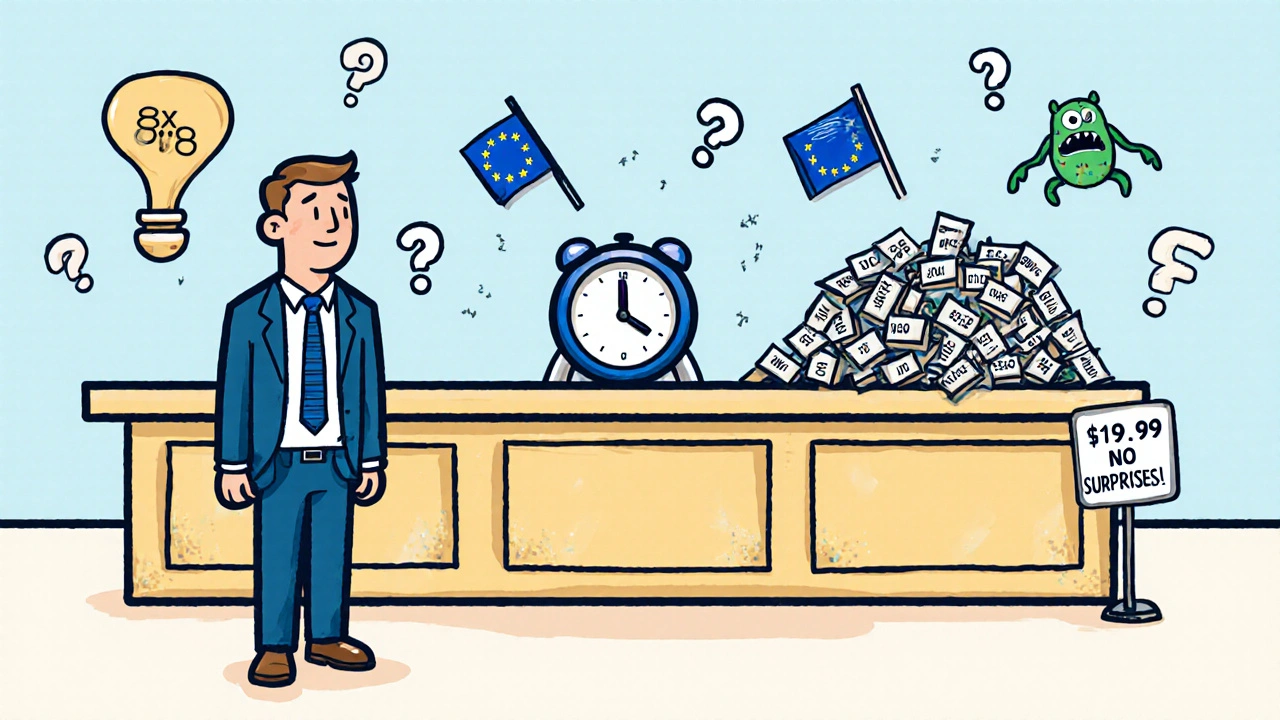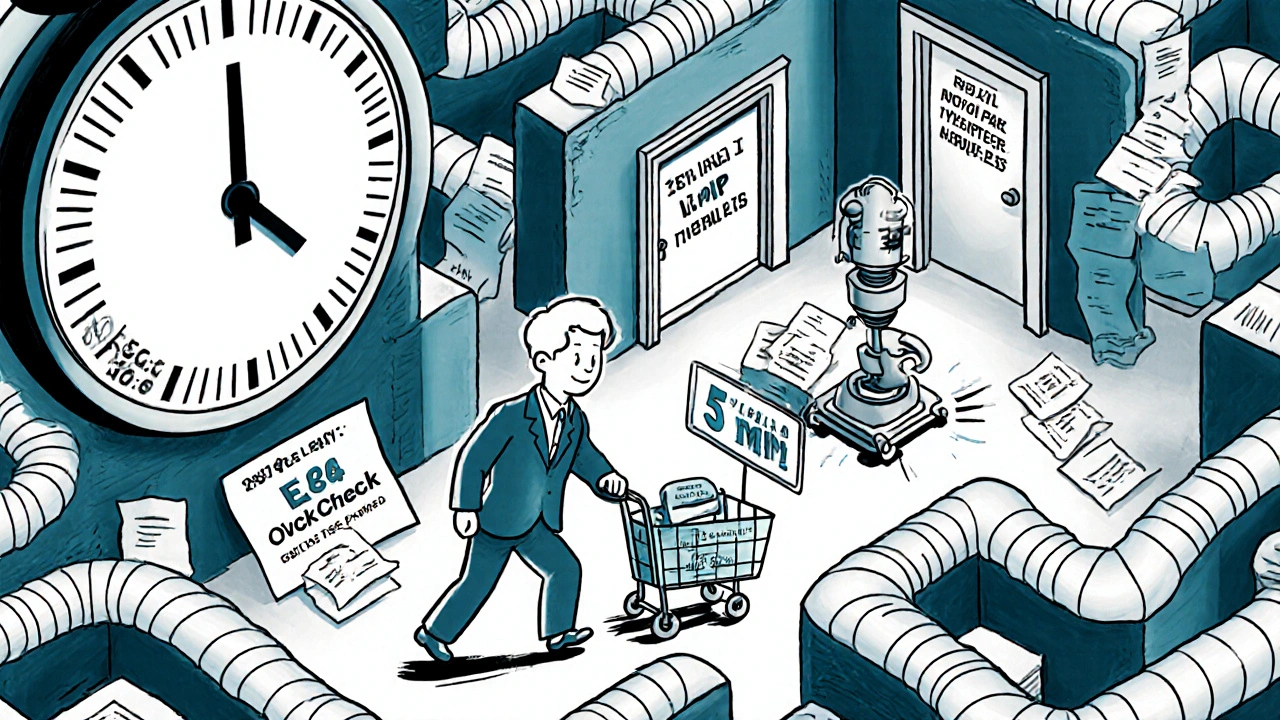Want to sound local to customers in Germany, Japan, or Brazil without opening an office there? That’s the promise of international number hosting in VoIP. But here’s the catch: the price isn’t the same everywhere. A number in Canada might cost you $1.50 a month. In India, it could hit $12.50. And that’s before you even find out about the hidden fees your provider never told you about.
Why International VoIP Numbers Cost So Much More in Some Countries
It’s not just about phone lines anymore. When you get a local number in France or Australia, you’re not just renting a number-you’re paying for compliance, regulation, and local telecom infrastructure. In countries like Germany or Japan, providers must follow strict rules about caller ID, data storage, and emergency service routing. These aren’t optional. They’re enforced by national telecom authorities, and the cost gets passed down to you.
Take Germany: you might see a listing for $1.99/month. But add in mandatory E.164 compliance fees, local number registration charges, and emergency service integration, and your real monthly cost jumps to $2.50-$3.00. That’s a 25-50% increase you won’t see until your bill arrives. The same thing happens in France, where regulators require physical address verification for every business number. In Brazil, you might need notarized documents and a local tax ID just to get started.
Providers don’t charge more because they’re greedy. They charge more because the legal and technical barriers are higher. In countries with weak telecom infrastructure or strict control over voice services, providers pay more to partner with local carriers. That cost shows up in your monthly fee.
How Major Providers Price International Numbers in 2025
Not all VoIP providers are built the same. Some treat international numbers like a one-size-fits-all feature. Others have fine-tuned pricing down to the country level.
RingCentral offers numbers in over 60 countries. Their pricing is straightforward on paper: $1.99/month for Germany, $2.49 for the UK, $3.99 for Australia. But look closer. Japan is $5.99. China? $7.49. Why? Because those markets require extra compliance layers and limited carrier partnerships. RingCentral’s AI-powered compliance system helps speed up setup in Europe, but in Asia, manual review still adds weeks to activation.
8x8 covers 90+ countries-the most in the market. But their tiered system makes it hard to budget. Tier 1 (US, Canada, UK): $1.50-$2.50. Tier 2 (Germany, France, Australia): $3.50-$5.50. Tier 3 (Brazil, India, Russia): $7.50-$12.50. If you need five numbers across Tier 3 countries, you’re looking at $40-$60 just for the numbers. And don’t forget: their quoted prices often don’t include regulatory surcharges.
Vonage dominates in Europe. Germany at $1.99, France at $2.25. But move to Brazil, and the price jumps to $9.50. Their new Global Number Hub, launched in April 2025, tries to fix this by offering flat $2.99/month for 40 priority countries. It’s a step toward simplicity-but only if your needs fit their list.
GoTo Connect has the widest coverage: 150+ countries. But their pricing is all over the map. Canada: $0.99/month. Saudi Arabia: $14.99/month. Why? Because Saudi Arabia requires government approval, local presence proof, and ongoing audits. That’s not a fee-it’s a bureaucratic marathon.
Zoom Phone takes a different route. Their $19.99/user/month plan gives you numbers in 30+ countries, but they don’t break down the cost per country. You get access, but no transparency. That’s risky if you’re scaling.

The Hidden Fees No One Talks About
You read the price. You sign up. You get your number. Then your next invoice arrives-and it’s 20% higher than expected.
This isn’t a mistake. It’s standard practice. In Europe, regulatory surcharges are baked into almost every bill. The EU’s 2024 Telecom Single Market rules forced providers to add caller ID verification, which adds $0.30-$0.80 per number per month. In Germany, that’s mandatory. In the UK, it’s optional-but most providers charge it anyway.
Users on Reddit and G2 Crowd are speaking up. One business owner in Berlin reported his German number was quoted at $1.99 but billed at $2.42. Another in São Paulo saw a $3.50 quote turn into $7.80 after local compliance fees kicked in. These aren’t rare cases. Gartner found that 68% of businesses using international numbers in regulated markets were hit with unexpected fees in their first 90 days.
Providers like OpenPhone stand out because they don’t hide these fees. Their UK number? Exactly $1.99. No surprises. No fine print. That’s why they’re gaining traction among SMBs who can’t afford billing shocks.
Setup Time Varies by Country-Sometimes by Weeks
Getting a number in the US or Canada? Usually 1-2 business days. You enter your business info, verify your email, and you’re done.
Now try India. You need:
- Notarized business registration
- Proof of local office (or a registered agent)
- Approval from the Department of Telecommunications
- Verification of your VoIP provider’s license
That process can take 10-14 days. And if your documents aren’t perfect? You get rejected. No refund. No explanation. India’s 2024 VoIP rules made this process 60% slower than before.
China is even tougher. Foreign businesses can’t get local numbers directly. You need a local partner. That means working with a third-party reseller, which adds cost and delays. Some providers don’t even offer China numbers anymore because the risk isn’t worth it.
Japan requires physical address verification. France requires a signed affidavit from a notary. These aren’t annoyances-they’re legal requirements. And if your provider doesn’t have a local compliance team, you’re stuck waiting.

Who Should Use Which Provider?
Not every business needs the same thing. Here’s how to match your needs to the right provider:
- Small businesses with 1-3 countries: Go with OpenPhone or Vonage. Transparent pricing, fast setup in Europe, no hidden fees.
- Mid-sized companies in North America and Europe: RingCentral. Strong reliability, good compliance automation, decent coverage.
- Global teams with 10+ countries: 8x8. Best coverage, but watch your budget. Tier 3 countries will eat your monthly bill.
- Companies targeting India, Brazil, Saudi Arabia: Be prepared. Use GoTo Connect for coverage, but expect higher fees and longer setup. Budget 2-3x more than you think.
- Enterprises needing compliance audits: RingCentral and 8x8 both offer audit trails and regulatory reporting tools. Zoom doesn’t.
If you’re scaling fast, avoid Zoom Phone’s bundled model. You’ll pay more for flexibility you don’t need. And if you’re cost-sensitive, avoid providers that don’t list per-country pricing upfront.
What’s Changing in 2025 and Beyond
The market is shifting fast. Vonage’s Global Number Hub is the first real move toward flat-rate pricing. RingCentral’s AI compliance system is cutting setup time in half for European numbers. And the FCC’s new portability rules have lowered North American setup fees by 15-20%.
But here’s the big picture: by 2027, IDC predicts the top five providers will control 75% of the market. That means fewer options, less competition, and potentially higher prices in hard-to-reach countries.
At the same time, demand is growing. Cross-border business calls are up 300% since 2020, according to the World Trade Organization. More companies are going global. More need local numbers. But the cost structure hasn’t caught up.
For now, the smartest move is to start small. Test one or two countries. Track your actual monthly cost-not the quoted price. Ask your provider: "What fees are added on top of the base rate for this country?" If they hesitate, walk away.
International numbers are a powerful tool. But they’re not cheap. And they’re not simple. The companies that win are the ones who plan for the hidden costs-not just the headline price.
Why are international VoIP number fees so different between countries?
Fees vary because each country has its own telecom regulations, licensing requirements, and carrier partnerships. Countries like Germany and Japan require strict compliance with caller ID, emergency services, and data storage laws-adding $0.50-$1.50 per month per number. In emerging markets like India or Brazil, providers must partner with local telecoms, which increases costs. Providers also charge more in countries with high outbound call volumes because they’re subsidizing the cost of incoming calls from abroad.
Can I avoid hidden fees when buying international VoIP numbers?
Yes-but you have to ask. Always request a breakdown of the monthly fee: base rate + regulatory surcharges + compliance fees. Providers like OpenPhone and Vonage (with their Global Number Hub) are transparent. Others, like RingCentral and 8x8, often list only the base rate. Check user reviews on G2 Crowd or Reddit for real-world billing experiences. If a provider won’t give you a full cost breakdown before you sign up, assume hidden fees are coming.
How long does it take to get an international VoIP number?
In the US, Canada, or UK: 1-3 business days. In Germany, France, or Australia: 3-7 days due to documentation checks. In India, Brazil, or Japan: 7-14 days or longer. These delays happen because of legal requirements: notarized documents, physical address verification, and government approvals. Providers with automated compliance systems (like RingCentral) move faster in Europe. In high-regulation markets, manual reviews still dominate.
Which provider has the best coverage for global businesses?
8x8 leads with numbers in over 90 countries. GoTo Connect covers 150+-the most on the market. But coverage doesn’t mean affordability. 8x8 charges up to $12.50/month for numbers in Brazil or India. GoTo charges $14.99 for Saudi Arabia. If you need broad coverage, expect higher costs in emerging markets. For most businesses, 40-60 countries is enough. RingCentral and Vonage cover the top 50 business markets with better pricing.
Are toll-free international numbers more expensive than local ones?
Yes. Toll-free international numbers cost more because they require agreements with multiple carriers across borders. Nextiva charges $5-$15 per toll-free number monthly. Vonage charges $2.99-$8.99, depending on the country. The cost reflects the complexity of routing calls internationally without charging the caller. Local numbers are cheaper because they’re tied to one country’s telecom network. Toll-free is useful for customer service lines-but it’s a premium feature.
Should I use a single provider for all my international numbers?
It depends. Using one provider simplifies billing and management. But if you need numbers in high-cost countries like India or Saudi Arabia, you might save money by using a local reseller there. For example, a provider like GoTo Connect might charge $14.99 for a Saudi number, but a local Indian telecom partner might offer a similar service for $8. That’s risky if you need centralized control, but it can cut costs. Most SMBs stick with one provider for ease. Enterprises often mix providers to optimize cost and coverage.









Write a comment